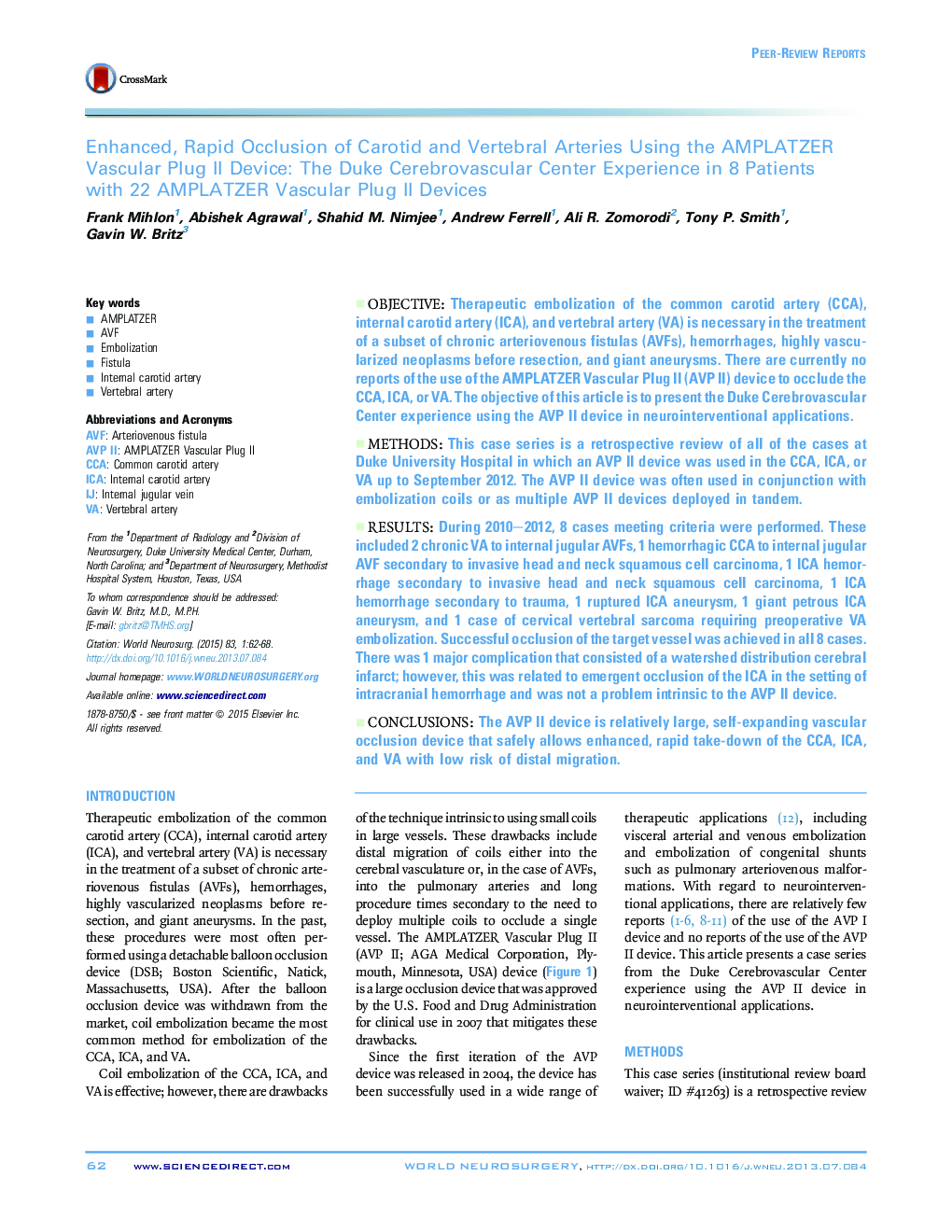| Article ID | Journal | Published Year | Pages | File Type |
|---|---|---|---|---|
| 3095114 | World Neurosurgery | 2015 | 7 Pages |
ObjectiveTherapeutic embolization of the common carotid artery (CCA), internal carotid artery (ICA), and vertebral artery (VA) is necessary in the treatment of a subset of chronic arteriovenous fistulas (AVFs), hemorrhages, highly vascularized neoplasms before resection, and giant aneurysms. There are currently no reports of the use of the AMPLATZER Vascular Plug II (AVP II) device to occlude the CCA, ICA, or VA. The objective of this article is to present the Duke Cerebrovascular Center experience using the AVP II device in neurointerventional applications.MethodsThis case series is a retrospective review of all of the cases at Duke University Hospital in which an AVP II device was used in the CCA, ICA, or VA up to September 2012. The AVP II device was often used in conjunction with embolization coils or as multiple AVP II devices deployed in tandem.ResultsDuring 2010–2012, 8 cases meeting criteria were performed. These included 2 chronic VA to internal jugular AVFs, 1 hemorrhagic CCA to internal jugular AVF secondary to invasive head and neck squamous cell carcinoma, 1 ICA hemorrhage secondary to invasive head and neck squamous cell carcinoma, 1 ICA hemorrhage secondary to trauma, 1 ruptured ICA aneurysm, 1 giant petrous ICA aneurysm, and 1 case of cervical vertebral sarcoma requiring preoperative VA embolization. Successful occlusion of the target vessel was achieved in all 8 cases. There was 1 major complication that consisted of a watershed distribution cerebral infarct; however, this was related to emergent occlusion of the ICA in the setting of intracranial hemorrhage and was not a problem intrinsic to the AVP II device.ConclusionsThe AVP II device is relatively large, self-expanding vascular occlusion device that safely allows enhanced, rapid take-down of the CCA, ICA, and VA with low risk of distal migration.
